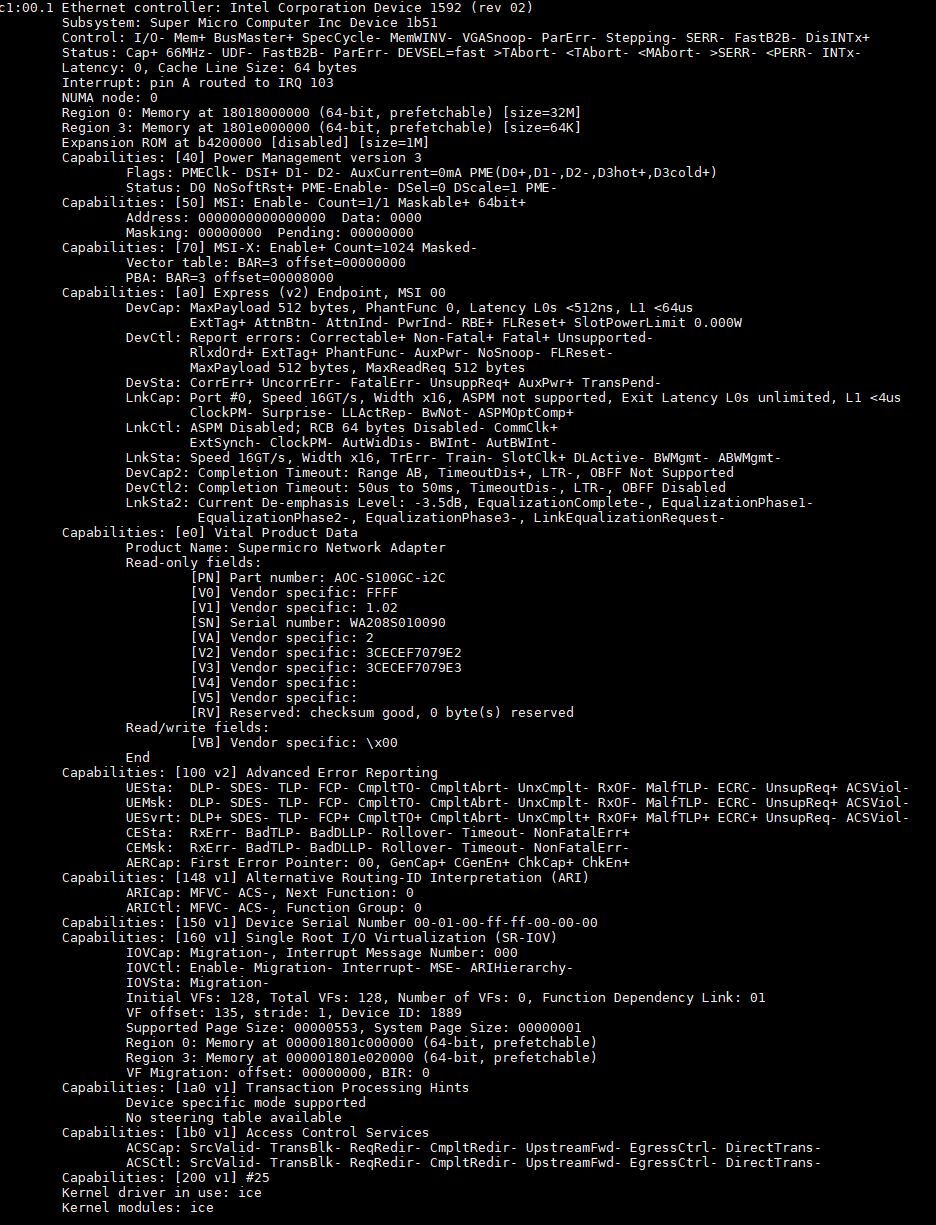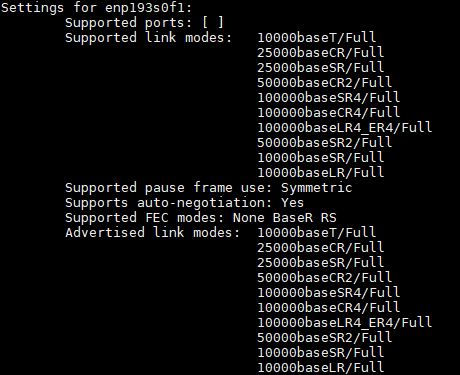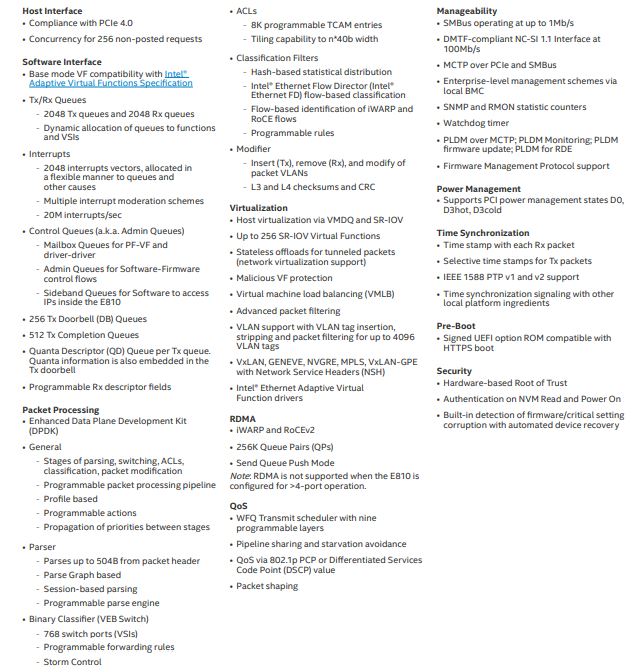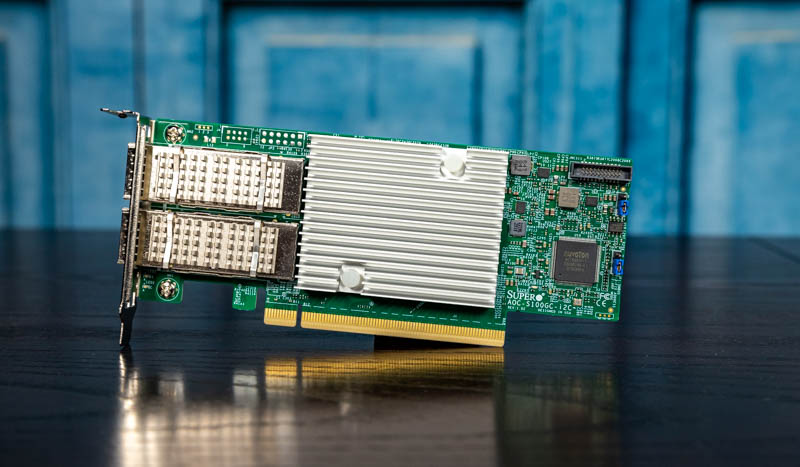Intel Ethernet 800 Series Driver
The new Intel Ethernet 800 series is a 100GbE adapter. 100 in Roman numerals is “C” so we get the ice driver (Intel 100 Ethernet.) Also here is the lspci output using the Intel ice driver:

Overall, the Intel ice driver is one that is newer. If you have a newer version of Linux it can work out of the box. We tested as far back as the Ubuntu 18.04.4 image with the HWE 5.4 Linux kernel and ice drivers were included. For other OSes, Intel is good about support. While if you have an older OS you will likely need to add a driver, in the future we expect to see this as a very well supported NIC as Intel’s other NICs have been.
Here is a quick look at the 100Gbps advertised speeds via ethtool:

Since the key specs are not published for the Supermicro AOC-S100GC-i2C yet, here is the list for the Intel Ethernet 800 series:

Overall, there is a lot going on here so this is the best we can offer in terms of specs at this point.
Performance
In our testing, we were able to hit 100Gbps speeds in basic testing as we would expect from a NIC like this.
We ran into a snag after we ran our NVMeoF tests. Namely, we only had a single Intel Ethernet 800 Series NIC, this Supermicro AOC-S100GC-i2C. As a result, either our SUT or our clients needed to use other types of NICs which we realized could skew our NVMeoF results. Of course, we realized this upon reviewing our data, after we had dismantled the test system. We included a look at the NVMeoF performance from Intel and reviewed their test procedure. We saw about 10-15% lower numbers on the throughput side but we had a different test setup. Still, the 2.5M IOPS seems reasonable given what we saw using a less controlled setup with different NICs, servers, and drives. On the other hand, having a RoCEv2 NVMeoF setup running with an Intel-based NIC was great to see.
Power Consumption
In terms of power consumption, we saw 15.6-18.1W over the course of our testing the Supermicro AOC-S100GC-i2C. We were, however using DACs. Our expected range using DACs and optics is:
- 15-20W with DACs
- 19-28W with Optics
There is a lot of variabilities here in terms of types of optics and cabling used, as well as the capabilities being used and loading of the NICs. As a result, we are just going to say that our testing fell within what we would expect.
Final Words
Overall, the Supermicro AOC-S100GC-i2C is a really interesting card. Given this is a Columbiaville Intel Ethernet 800 series NIC, instead of a Red Rock Canyon FM10420 NIC like the AOC-S100G-i2C it is going to appeal to a much wider range of buyers. The ability to integrate into Supermicro’s server management via the NC-SI header makes it extremely interesting if you are looking for an Intel Ethernet 800 series NIC in your Supermicro server.

One of the biggest changes that are on the horizon is that Intel will be joining AMD, IBM, Ampere, NVIDIA, and others supporting PCIe Gen4 with its upcoming Ice Lake Xeon series for servers. When this happens, one can configure an Intel Ice Lake Xeon server, with an Intel Ethernet 800 series NIC such as the Supermicro AOC-S100GC-i2C and get dual-port 100GbE 100Gbps NIC along with a host of new features in a single PCIe Gen4 x16 slot. While the next-generation of servers is going to see a compute performance boost, one of the biggest changes we will see in servers in 2021 is the PCIe Gen4 market and what doubling the speed of I/O will do to the server space.




sed “s/network traffic bade on the application/network traffic based on the application/g”
No Open VSwitch offload like the Mellanox/Nvidia ConnectX line. That’s unfortunate.